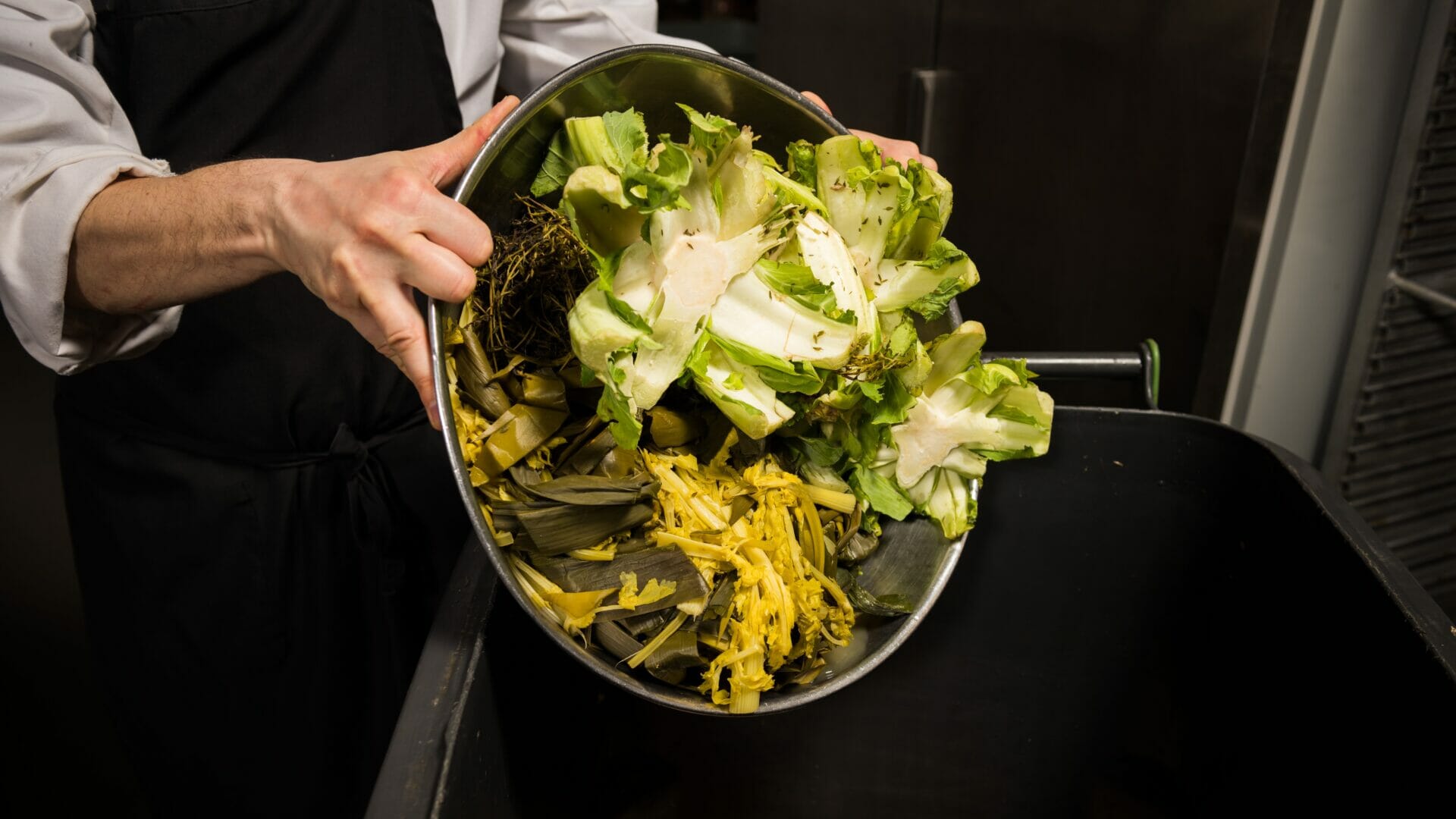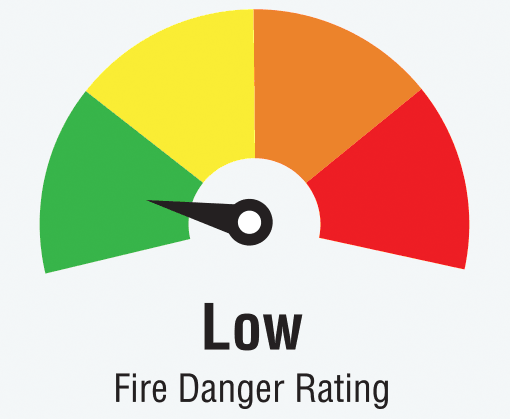
All commercial and strata properties in Whistler are required to collect and separate all recycling, compost and landfill waste.
Specifically, under the RMOW’s Solid Waste Bylaw, commercial and strata properties need to:
- Collect and divert food waste.
- Have three stream waste collection: recycling, compost and landfill waste.
- Manage contamination of all three streams of waste.
Contaminated loads of recycling, compost or landfill waste will be classified as “mixed garbage” by waste haulers, resulting in costs of $425 per tonne for disposal – more than double the cost of any other waste stream.
Don’t forget to be Bear Smart, too. Restaurants, construction sites and other commercial properties are also required to ensure all the waste collected is properly stored to keep bears safe.
- Learn more about bear safety for restaurants and bear safety for construction sites.
- View the RMOW’s Solid Waste Wildlife Enclosure Guidelines, and contact the Building Department for specific questions.
Waste management toolkits
To make it easier for commercial and strata properties to manage collect and separate waste, the RMOW has developed toolkits.
Solutions Guide for Commercial Properties
For a comprehensive overview of how businesses can adapt their practices, download How to Achieve Zero Waste in Whistler Restaurants.
This all-in-one guide takes businesses step by step through how to enhance their waste management practices, including:
- Evaluating existing waste management practices and identifying areas for improvement.
- Understanding options for waste segregation infrastructure.
- Training staff and ongoing monitoring.
- Reviewing purchasing to reduce waste and simplify segregation.
Solutions Guide for Multi-Family Accommodation Properties
For guidance on how multi-family accommodation properties can adapt, download A Waste Solutions Guide: Recycling and Reducing Food Waste in Multi-Family Accommodation Properties.
This guide is intended to support the implementation of new or updated waste management systems in multi-family accommodation properties of 12 or more units. This guide is intended for use by:
- Strata Management Company Staff
- Property Rental Company Staff
- Property Strata Councils
The guide also provides a support tool to those seeking to champion changes in properties where they reside or for strata properties with less then 12 units.
Companion tools
- Tool 1: Reviewing Existing Waste Systems
A good starting point to understand business waste is to conduct a visual review to identify gaps in the waste management system. Use the checklist in this tool to observe the contents and flow of waste through any business. - Tool 2: Identifying Food Waste Sources
This tool can be used as a tracking sheet to record the primary sources of food waste generated in your business. We recommend tracking for at least three days to collect an accurate representation of the source and quantity of food waste being generated. - Flow Chart: Steps to Revise Waste Collection
Use this flow chart to identify the steps your business can take to revise your waste collection systems and comply with the RMOW’s Solid Waste Bylaw.
Free downloadables
These posters, labels and signs can help businesses and staff better understand what goes in each waste stream.
Composting
- Composting Poster – This poster showcases what goes in and what stays out of the compost bin
- Composting Bin Label – This label goes on a composting bin to remind everyone what can be composted
- Identifying Compostable Plastics Infosheet – This infosheet helps identify what plastics have been certified as safe for soils.
All materials
These signs use standardized colour-coding and icons.
- Printable signs: Available in multiple formats
- SLRD Do-It-Yourself Signage Tool: Build custom signage
Want more resources? Visit AWARE’s site for a more comprehensive collection of waste reduction tools for businesses. You can also attend one of AWARE’s Zero Waste Events.
Enforcement is directed at businesses and strata properties that generate waste. They are responsible for ensuring that waste is separated into three streams (recycling, compost and garbage to landfill) and that it isn’t a wildlife attractant. They are also responsible for monitoring their own bins for contamination.
The RMOW in turn works with waste haulers to help determine who is not complying with the bylaw.
Pests and odour can be kept to a minimum with regular emptying and cleaning of food waste containers.
Businesses need to manage their organics collection bins in order to reduce nuisances such as pests, odour and attracting wildlife. Talk to your waste hauler about options such as:
- Switching in clean bins after collection.
- Using a pre-approved bin liner when available.
- Having bins cleaned at time of collection.
- More frequent collection during hot weather.
- Reducing liquids in your organics collection.
A lot of food-soiled papers such as pizza boxes and paper napkins are compostable. Let your waste hauler know you intend to compost, and recycle, everything you can. Examples of compostable materials include some varieties of
- pizza boxes
- paper towels/napkins
- paper egg cartons
- food-soiled newspaper
- waxed cardboard
- paper bags and paper liner bags used for collecting scraps
- uncoated paper plates/cups
- uncoated take-away food packaging
Materials accepted include:
- plate scrapings
- meat, fish and poultry
- bones
- dairy products
- soiled paper products such as takeout food containers and cups, paper towels and tissues. Ensure it is certified compostable plastic
The choice of using a liner bag will be up to you. If you use food waste container liner bags you will have to ensure the bag used has the certified “Compostable” logo. Plastic, biodegradable or oxo-degradable are not accepted. Here’s how to identify certified compostable plastic.
Compostable bags are created from plant starches and are specifically designed to break down during the composting process. To be certified as compostable, they must biodegrade in compost at a similar rate as paper products, must disintegrate so that no particles are visible within the compost and must not create any toxic residues while they biodegrade. Do not use plastic or biodegradable bags, as they are not designed to disintegrate adequately at the composting facility and may leave toxic residues within the finished compost.
If you choose not to use a liner bag, you can place food waste directly into your kitchen container and rinse or wash as needed. Other options include wrapping food waste in newspaper, using paper food bags, cereal boxes or a paper milk carton to collect food scraps. This, along with frequent rinsing, will help keep containers clean.
Some materials in the green bin or kitchen catcher may cause odours just as they would if placed in your garbage can. Here are some tips that can help prevent odours:
- Empty your kitchen catcher frequently by transferring contents to your green bin.
- Don’t leave food waste exposed and keep your green bin and kitchen catcher lids tightly closed.
- Wash your kitchen catcher and green bin with hot water and bio-degradable detergent.
- To absorb moisture, line the bottom of your green bin and kitchen catcher with newspaper, a paper bag or paper towel.
- Freeze meat, fish, poultry or bones and put these materials in your green bin on your collection day.
- Prevent odours by sprinkling a small amount of baking soda, garden lime or vinegar in your containers.
- Store your green bin in a secure, cool, ventilated location.
Food waste and other acceptable household compostable waste will go to a composting facility within the SLRD. These materials are mixed and composted using an aerobic process that generates sufficient heat to kill pathogens. The finished products include compost, fertilizers, and soil amendments, all of which meet the BC Organic Matter Recycling Regulation. Learn more about Whistler’s waste system.
Contact
Infrastructure Services
604-935-8190
zerowaste@whistler.ca

